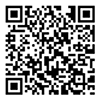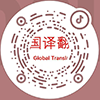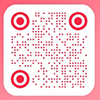Specific Solutions
Medical Device Documentation Translation
With the internationalization of the medical device industry, companies increasingly need to translate medical device documentation into different languages for product registration, clinical trials, marketing, and technical exchanges. Translating medical device documentation is different from ordinary text; it requires high levels of professionalism, accuracy, and regulatory compliance.
1. Characteristics of Medical Device Documentation Translation
Dense Technical Terminology
Medical device documents contain device names, structural components, functional principles, operating instructions, and technical parameters, with numerous specialized terms. Translators must have knowledge in medicine, engineering, or related fields.Strict Regulatory Requirements
Materials such as product manuals, registration applications, and risk assessment reports are legal documents. Translations must comply with the regulations of the target country or region to ensure legal validity.Variety of Document Types
These include product manuals, user guides, clinical trial protocols, technical standards, registration files, and quality management system documents. Each type has different translation requirements.High Accuracy and Consistency Requirements
Incorrect translations can lead to operational risks or registration failures. Terminology, data, and instructions must be highly consistent and precise.
2. Translation Process and Quality Control
Professional medical device translation companies typically follow a strict workflow:
Source Analysis: Translators analyze the original document and prepare a terminology glossary and translation plan.
Initial Translation: Specialized translators with medical or engineering backgrounds complete the first draft, ensuring term accuracy.
Proofreading and Review: A professional review team checks logic, grammar, data, and regulatory compliance.
Final Review and Delivery: Ensure the document meets formatting, content, and regulatory standards, ready for registration or technical communication.
3. Tips for Choosing a Medical Device Translation Company
Professional Credentials
Choose a company with medical or engineering expertise to ensure translations meet technical and regulatory requirements.Translator Team
Verify that translators have extensive experience in the medical device field and are supported by a professional review team.Confidentiality and Security
Medical device documentation often involves commercial secrets and intellectual property. Companies must have strict confidentiality measures in place.Quality Assurance
Reputable companies provide multiple rounds of proofreading, terminology consistency checks, and post-delivery revision services to ensure translation quality.Service Scope
Companies offering additional services such as formatting, table and figure translation, and regulatory compliance review are more reliable.
4. Conclusion
Medical device documentation translation requires not only linguistic accuracy but also professional knowledge, regulatory awareness, and rigorous quality control. Choosing an experienced and reliable translation company ensures precise, compliant translations and provides strong support for product registration, technical communication, and international market expansion.


















